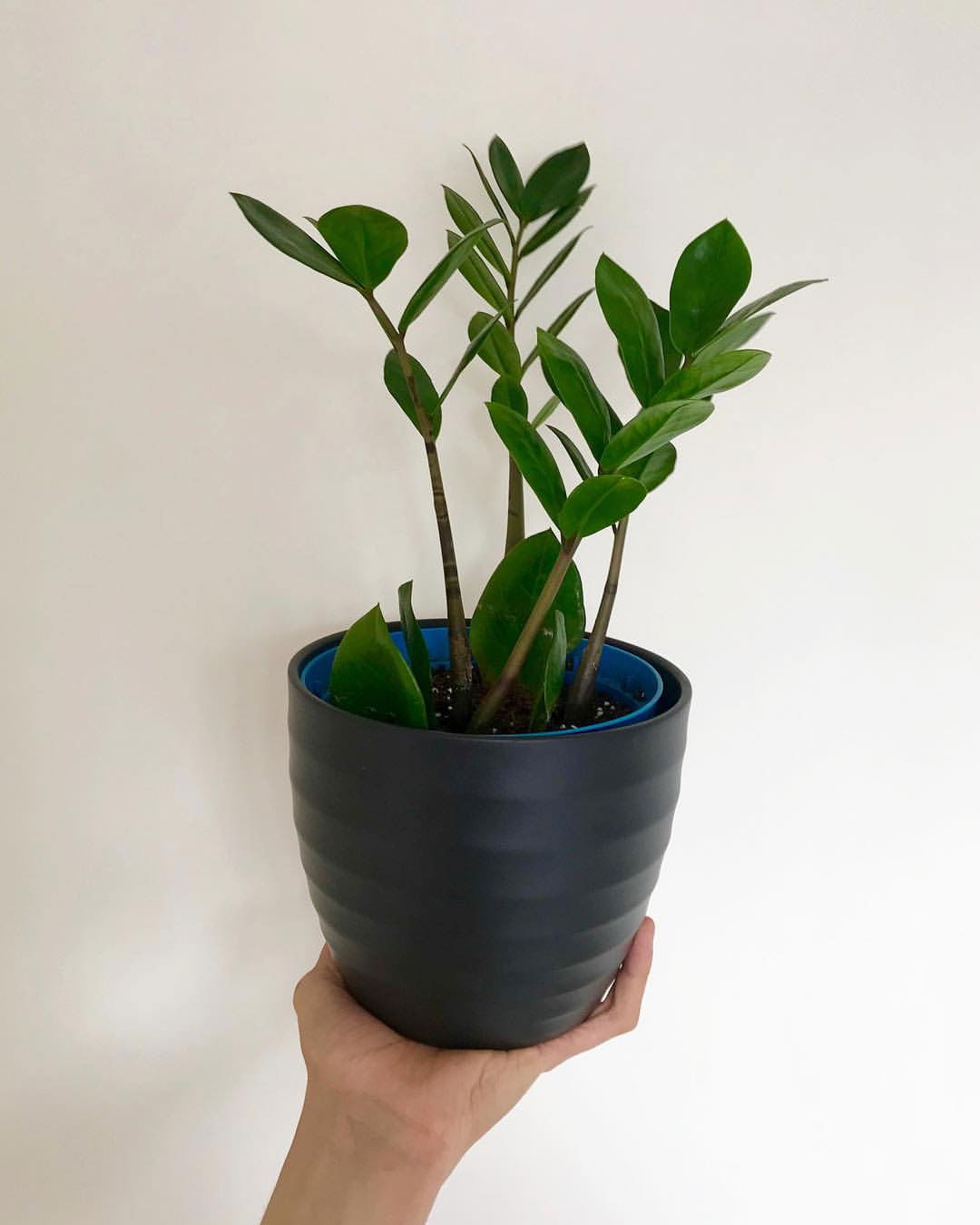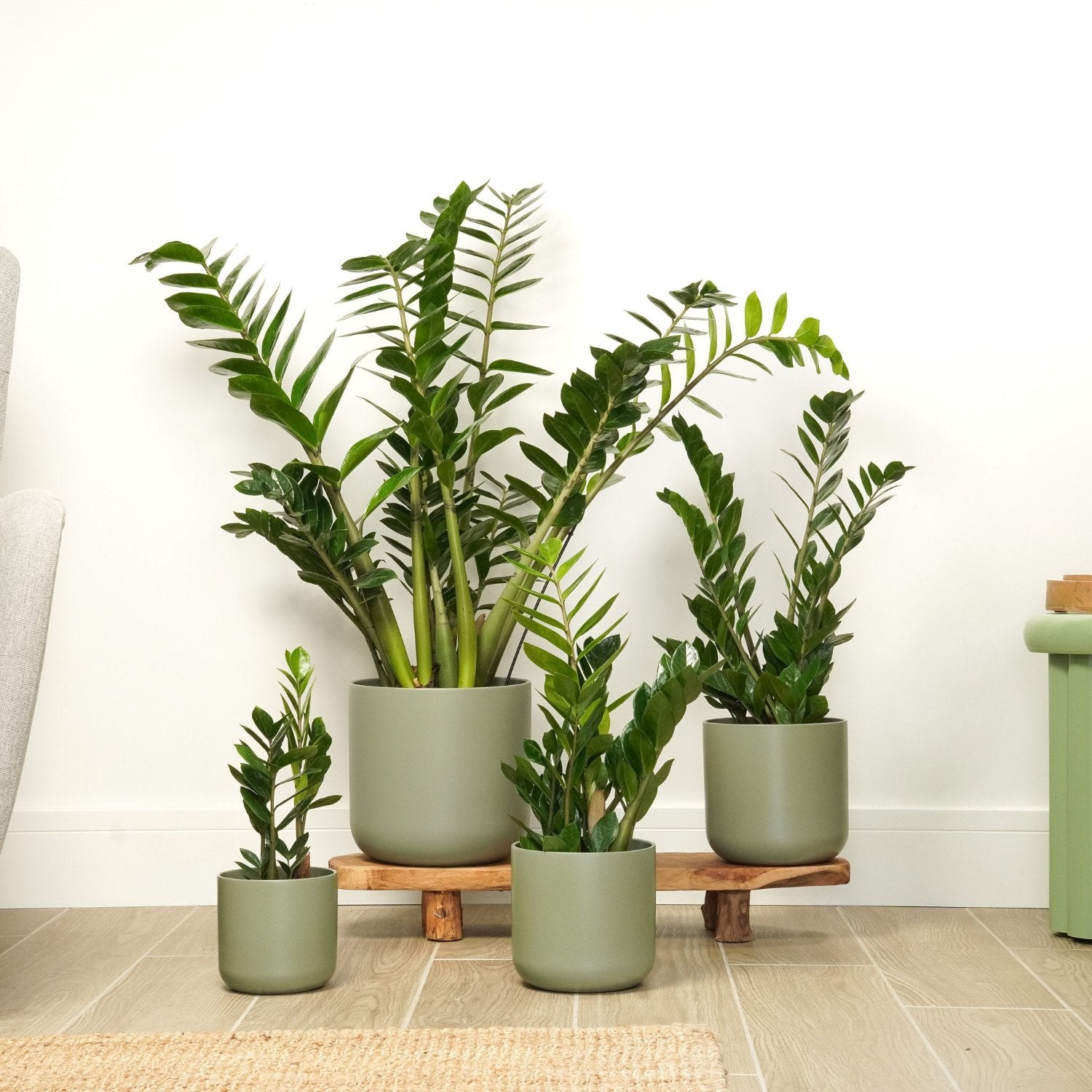The Zanzibar Gem: A Study in Resilience and Elegance
The Zamioculcas zamiifolia, more commonly known as the Zanzibar Gem, ZZ plant, or Eternity Plant, has surged in popularity in recent years, becoming a staple in homes and offices worldwide. Its appeal lies not only in its glossy, dark green foliage and architectural form but also in its remarkable ability to thrive under conditions that would challenge most other houseplants. This article delves into the fascinating world of the Zanzibar Gem, exploring its origins, characteristics, cultivation, and the reasons behind its enduring popularity.
A Native of Arid Regions
The Zanzibar Gem is native to the arid to semi-arid regions of East Africa, specifically in countries like Zanzibar (hence its name), Tanzania, Kenya, and Malawi. This geographical origin provides crucial insight into its adaptability. In its natural habitat, the plant experiences periods of drought interspersed with occasional rainfall. This has led to the development of unique adaptations that allow it to conserve water and survive in harsh conditions.
Adaptations for Survival

The plant’s thick, fleshy rhizomes, which grow beneath the soil surface, serve as water storage organs. These rhizomes also enable the plant to regenerate if the above-ground parts are damaged. The glossy, waxy leaves reduce water loss through transpiration, and the succulent stems also contribute to water storage. These adaptations make the Zanzibar Gem exceptionally drought-tolerant.
A Unique Aesthetic
The Zanzibar Gem is prized for its upright, symmetrical growth habit and its pinnate leaves, which resemble those of cycads. The leaves are arranged in pairs along thick, arching stems, creating a feather-like appearance. The dark green, almost black, leaves have a glossy sheen that adds to the plant’s visual appeal.
Rhizomes and Roots
The most remarkable feature of the Zanzibar Gem lies beneath the soil. Its robust rhizomes, which can grow quite large, are responsible for the plant’s resilience. These rhizomes store water and nutrients, allowing the plant to survive extended periods of neglect. The roots, which grow from the rhizomes, are also thick and fleshy, further contributing to water storage.
Flowering (Rare in Cultivation)

While the Zanzibar Gem can produce flowers, it is a rare occurrence in indoor cultivation. The flowers, which are small and inconspicuous, grow at the base of the plant and are typically hidden among the leaves. They are spathe and spadix flowers, similar to those of other aroids.
Light Requirements
The Zanzibar Gem is remarkably tolerant of a wide range of light conditions. It can thrive in bright, indirect light, but it can also tolerate low light levels. However, it is important to avoid direct sunlight, which can scorch the leaves. In low light, the plant’s growth may be slower, but it will still survive.
Watering
Overwatering is the most common cause of problems with Zanzibar Gems. Due to its water-storing rhizomes, the plant prefers to be underwatered rather than overwatered. Allow the soil to dry out completely between waterings. During the winter months, when growth slows down, watering should be reduced even further.
Soil and Potting
A well-draining potting mix is essential for the Zanzibar Gem. A mixture of standard potting soil, perlite, and coarse sand provides excellent drainage. The pot should have drainage holes to prevent waterlogging. Repotting is only necessary every few years, when the plant becomes root-bound.
Temperature and Humidity
The Zanzibar Gem prefers average room temperatures, between 65°F and 80°F (18°C and 27°C). It can tolerate slightly cooler temperatures, but it is not frost-tolerant. Average humidity levels are sufficient for this plant.
Fertilizing
The Zanzibar Gem is not a heavy feeder. A balanced liquid fertilizer diluted to half strength can be applied every two to three months during the growing season (spring and summer). Avoid fertilizing during the winter months.
Propagation
The Zanzibar Gem can be propagated through several methods, including:
Division of Rhizomes
This is the most common and easiest method. The rhizomes can be divided when repotting the plant. Each division should have at least one stem and a portion of the rhizome.
Leaf Cuttings
Individual leaves can be used to propagate the plant. Place the leaf cuttings in a moist potting mix or water. It may take several months for new roots and rhizomes to develop.
Stem Cuttings
Stem cuttings can also be used for propagation. Cut a healthy stem and remove the lower leaves. Plant the cutting in a moist potting mix.
Common Pests
The Zanzibar Gem is relatively resistant to pests, but it can occasionally be affected by:
Scale Insects
These small, brown insects attach themselves to the stems and leaves. They can be removed with a cotton swab dipped in rubbing alcohol.
Mealybugs
These white, cottony insects feed on the plant’s sap. They can be treated with insecticidal soap or neem oil.
Spider Mites
These tiny pests create webs on the leaves and feed on the plant’s sap. They can be controlled with insecticidal soap or by increasing humidity.
Root Rot
Root rot is the most common disease affecting Zanzibar Gems. It is caused by overwatering and poor drainage. To prevent root rot, ensure that the soil is allowed to dry out between waterings and use a well-draining potting mix.
Calcium Oxalate Crystals
The Zanzibar Gem contains calcium oxalate crystals, which can cause irritation if ingested. It is important to keep the plant out of reach of children and pets. If ingested, seek medical attention.
Low Maintenance
The Zanzibar Gem’s ability to tolerate neglect makes it an ideal plant for beginners and those with busy lifestyles. It can survive extended periods of drought and low light, requiring minimal care.
Air Purification
Like many houseplants, the Zanzibar Gem helps to purify the air by removing toxins. It has been shown to be effective in removing volatile organic compounds (VOCs) from the air.
Aesthetic Appeal
The plant’s glossy, dark green foliage and architectural form add a touch of elegance to any space. It is a versatile plant that can complement a variety of interior design styles.
Symbolism
In some cultures, the Zanzibar Gem is considered a symbol of prosperity and good fortune. This association has contributed to its popularity as a gift plant.
Cultivar Development
As the Zanzibar Gem continues to grow in popularity, there is increasing interest in developing new cultivars with different leaf colors and growth habits. This could lead to the introduction of new and exciting varieties in the future.
Sustainable Cultivation
With the growing demand for houseplants, it is important to ensure that the cultivation of Zanzibar Gems is sustainable. This includes using environmentally friendly growing practices and reducing the use of pesticides.
The Zanzibar Gem, with its resilience, elegance, and low-maintenance requirements, has earned its place as a beloved houseplant. Its ability to thrive in a variety of conditions makes it a perfect choice for both novice and experienced plant enthusiasts. As we continue to appreciate the benefits of indoor plants, the Zanzibar Gem is sure to remain a popular and cherished addition to our homes and offices.
